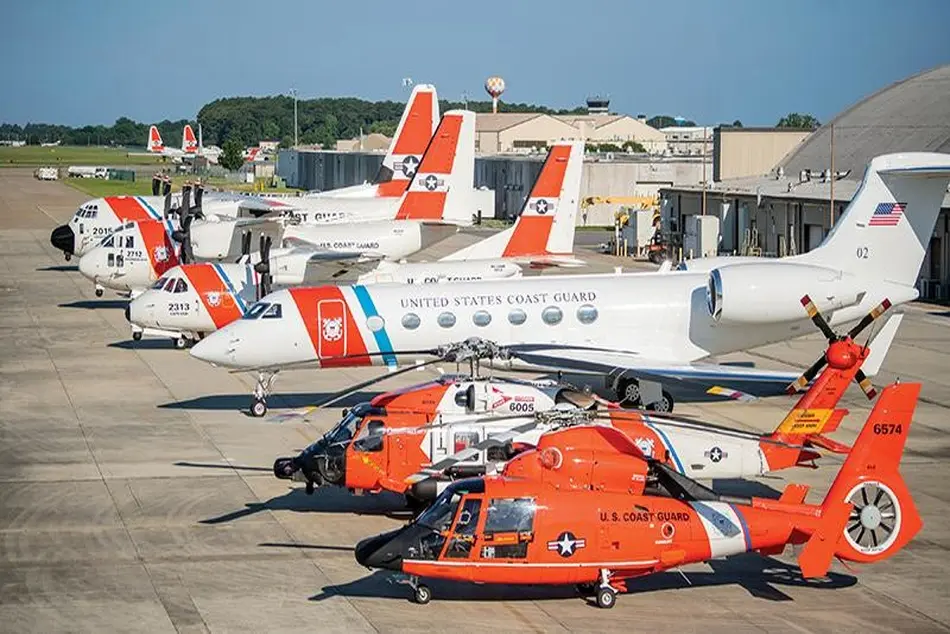Coast Guard Grows VIP Fleet Amid Helicopter Procurement Changes
The increased focus on homeland defense has translated to a budget influx for the U.S. Coast Guard, enabling the service to modernize its fleet, as a watchdog outlines a continued drop in readiness.

The increased focus on homeland defense has translated to a budget influx for the U.S. Coast Guard, enabling the service to modernize its fleet, as a watchdog outlines a continued drop in readiness.
The One Big Beautiful Bill Act passed in Congress and signed by President Donald Trump in July allotted the service $24.59 billion to be spent on readiness through 2029. That was in addition to the Coast Guard’s fiscal 2026 request of $14.5 billion.
The law directed that $1.42 billion should be spent on fixed-wing programs, $2.28 billion for rotary-wing and $266 million for long-range uncrewed aircraft.
Coast Guard fixed-wing modernization grabbed national headlines in October when news broke that the service was spending $172 million on two Gulfstream G700s for VIP transport and command and control. The move prompted surprise and political condemnation directed at the Department of Homeland Security (DHS), as the $172 million purchase far exceeded the Coast Guard’s original plan to spend $50 million on one Gulfstream G550. In a letter to DHS Secretary Kristi Noem, Democratic members of the House Appropriations Committee called the purchase of “luxury jets” a misuse of funds amid the government shutdown.
In response to the committee’s letter, Coast Guard Acting Commandant Vice Adm. Kevin Lunday said the purchase “underscores the Coast Guard’s vital need to modernize its command and control capabilities to meet rapidly evolving operational demands.
“Modernizing the Coast Guard’s aging and obsolete aviation fleet is essential to ensuring our ability to successfully conduct national security missions,” Lunday’s statement continued. “The purchase of these aircraft will meet our operational requirements for safe, reliable, on-demand military transport with integrated and secure command and control capabilities.”
In a follow-up statement to Aviation Week, the Coast Guard said the purchase of G700s was in addition to, not a replacement for, the current long-range, command-and-control aircraft (LRCCA). The Coast Guard flies two Gulfstreams in that role, designated CG-101 and CG-102. CG-102, a G550, was delivered in 2022; the service has owned the first Gulfstream V-based CG-101 since 2002.
“The Coast Guard plans to operate up to four LRCCA, including the two G700 aircraft,” the Coast Guard told Aviation Week.
Market research following an April sources-sought notice found no other viable option than Gulfstream to meet mission requirements.
“While the G550 is a capable aircraft, it is no longer in production and already faces obsolescence issues,” a Coast Guard spokesperson said in the statement to Aviation Week. “The Gulfstream G700 is in production and benefits from modernized equipment that is expected to remain sustainable for longer than the out-of-production G550 models.”
The Defense Department flies numerous Gulfstream Vs and G550s in a variety of roles, mostly as VIP transport C-37s. The U.S. Air Force, for example, operates 13 C-37A/Bs and has said it hopes to replace them soon. The service is running into obsolescence issues with another G550-based aircraft, the EA-37B Compass Call. The Air Force and Congress have looked at expanding the fleet with used aircraft.
As part of the increased rotary-wing funding, the Coast Guard has also outlined plans to buy new helicopters rather than refurbish U.S. Navy rotorcraft. U.S. Naval Air Systems Command posted an approval document for a noncompetitive buy of Sikorsky MH-60R variants on Oct. 21.
“The Coast Guard anticipates new aircraft procurements may be based off Sikorsky’s MH-60R aircraft, which is the maritime variant of the H-60 in active production,” a Coast Guard spokesman said in a statement. “Differences between the MH-60T and in-production MH-60R will be addressed with Sikorsky to ensure Coast Guard aircraft are delivered with the appropriate capabilities for Coast Guard missions.”
The Coast Guard outlined in its fiscal 2026 budget request plans to add four MH-60T hulls. The service said in 2023 that it had a “notional” plan to consolidate its fleet of medium-lift helicopters by buying more MH-60Ts, replacing 98 Airbus MH-65 Dolphins with refurbished Navy Sikorsky SH-60s. The service planned a total fleet of 127 MH-60Ts. MH-65s are expected to be phased out by the mid-2030s.
The service is also using the budget plus-up to expand its Lockheed Martin HC-130J fleet to 28 aircraft from 22.
While the service is increasing procurement, it will also face a decrease in its readiness rates, according to a Congressional Budget Office (CBO) report released Nov. 21. The report states that the service has about 200 crewed aircraft, two-thirds of which are rescue helicopters. Between 2006 and 2024, mission-capable aircraft availability declined steadily to 49%.
While the Coast Guard fleet flies much more often than Defense Department aircraft, the Coast Guard has about the same readiness rate as the department, the CBO states.



